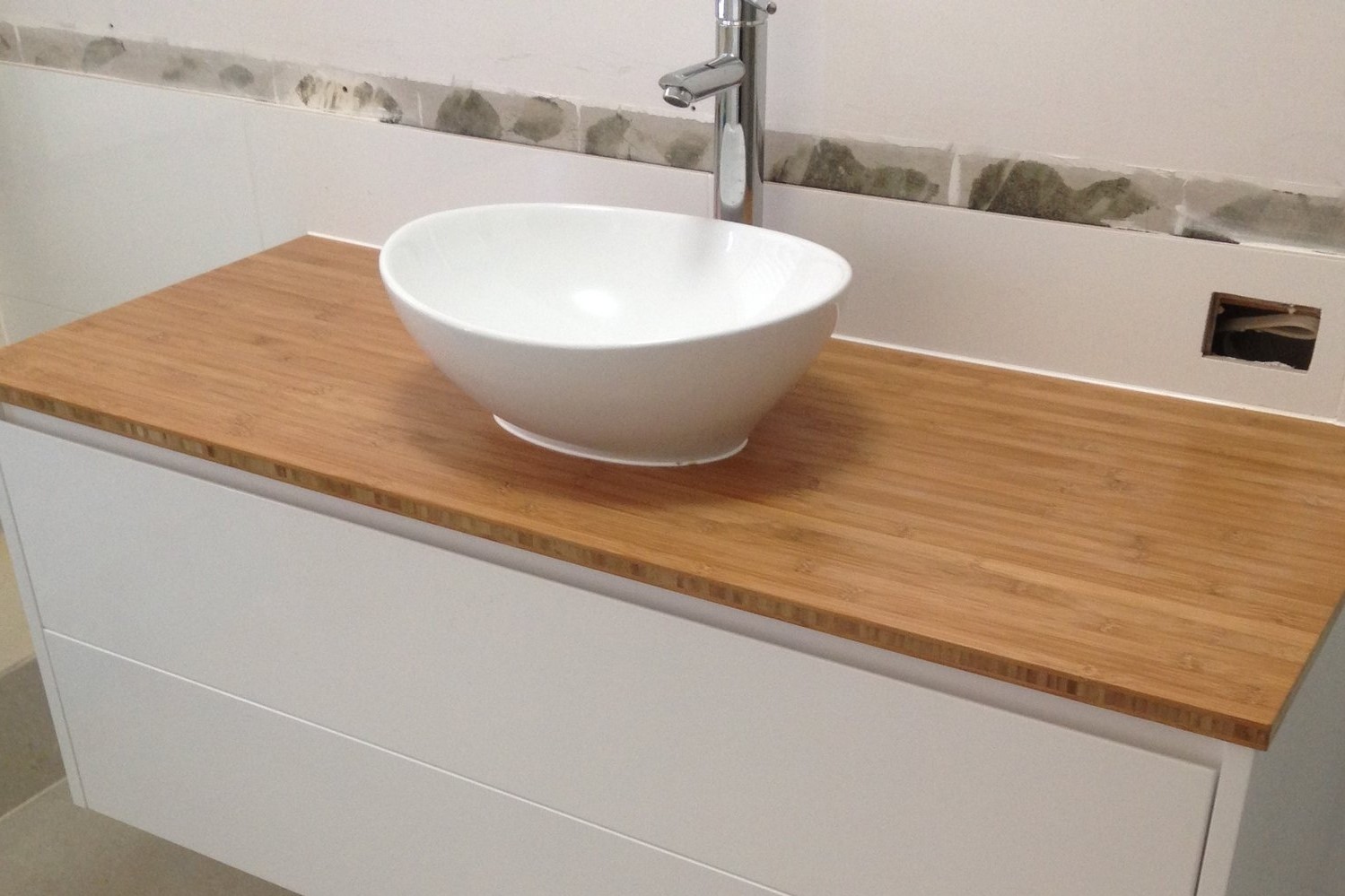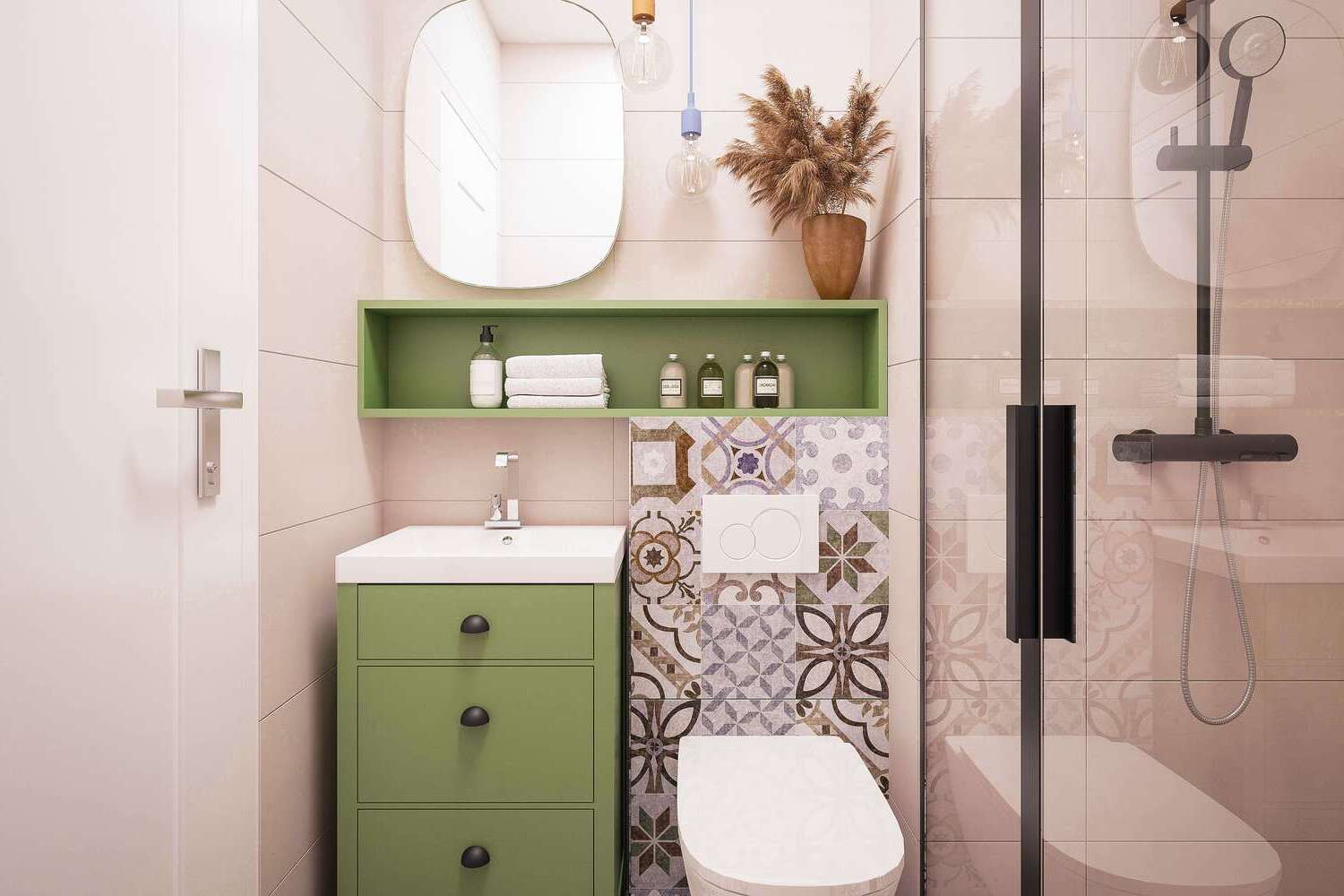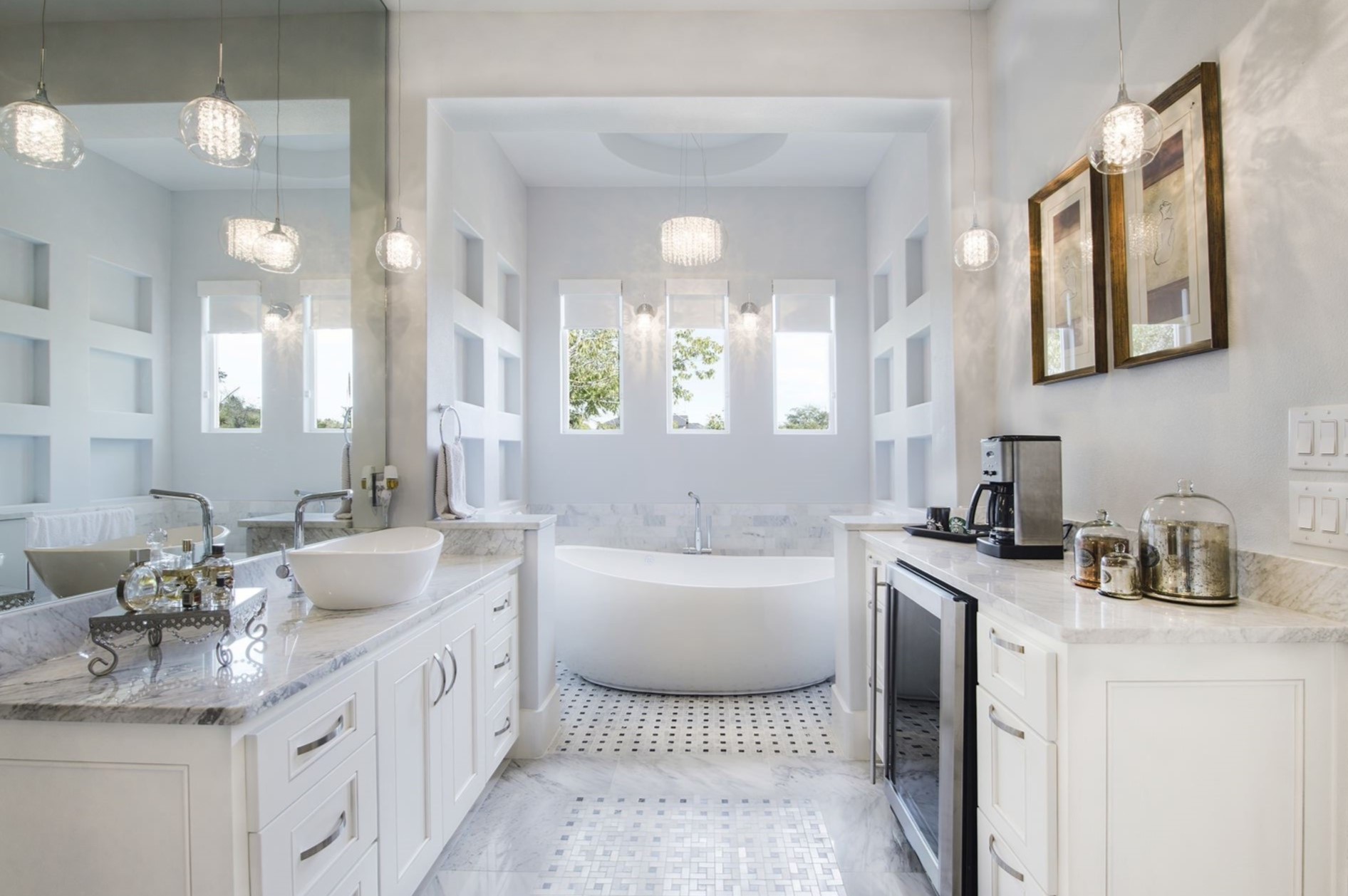Home>Ideas and Tips>How to Choose and Install the Right Bathroom Vanity with a Quartz Top


Ideas and Tips
How to Choose and Install the Right Bathroom Vanity with a Quartz Top
Modified: October 31, 2024
Learn how to choose and install the perfect bathroom vanity with a quartz top, enhancing both functionality and style in your bathroom.
(Many of the links in this article redirect to a specific reviewed product. Your purchase of these products through affiliate links helps to generate commission for Storables.com, at no extra cost. Learn more)
Choosing the right bathroom vanity with a quartz top can seem like a daunting task, but it doesn't have to be. By understanding your needs, considering various styles and materials, and following some essential tips, you can find a vanity that enhances both the functionality and aesthetic appeal of your bathroom. Let's dive into the nitty-gritty of how to choose and install the perfect bathroom vanity with a quartz top.
Understanding Your Needs and Space
First things first, you gotta know what you need and how much space you've got. Start by measuring the width, height, and depth of your bathroom. This helps you figure out the ideal size for your vanity. Don't forget to consider door swings and other fixtures to make sure the vanity doesn't block anything. If you're doing a complete remodel, check your city's building codes to ensure you're picking a size that complies with permit guidelines.
Next, decide on the dimensions of the vanity that will fit comfortably within the space. Make sure you leave enough clearance around the vanity to create a spacious and unobstructed environment. The standard height for vanity cabinets is typically around 32 inches, but remember that your countertop will add an extra inch of height. Standard depth is 21 inches, with a countertop adding another inch to that as well.
Assess your storage needs. Do you need space for toiletries, towels, and other bathroom essentials? Opt for additional drawers and cabinets if you need more storage. Also, decide whether you prefer a single or double sink vanity based on your usage needs and available space. Double sinks are great for larger bathrooms and households with multiple users, while a single sink is perfect for smaller bathrooms.
Modern vs. Traditional
Choosing the right bathroom vanity can resolve any design mismatch. The style of your vanity should complement your home's overall theme. For modern spaces, go for sleek lines, minimalist designs, and contemporary materials like glass or metal. These styles are perfect for creating a clean and sophisticated look in your bathroom.
On the flip side, for traditional homes, select ornate details and classic wood finishes. These styles add a touch of elegance and warmth to your bathroom, creating a harmonious environment. Whether you lean towards modern or traditional, make sure the vanity you choose fits the vibe of your home.
Freestanding vs. Built-In
Bathroom vanities come in two main types: freestanding and built-in. Each type has its own pros and cons. Freestanding models offer mobility and layout flexibility. They're easy to move and reposition, making them ideal for bathrooms with changing layouts or for those who like to rearrange their space frequently.
Built-in units, on the other hand, provide permanent, custom-fitted storage solutions. They're more stable and offer more storage space compared to freestanding vanities. However, they require professional installation and can be more expensive. Weigh the pros and cons of each type to determine which one suits your needs best.
Sink and Faucet Selection
Choosing the right sink and faucet is crucial for both functionality and aesthetics. Undermount sinks are installed below the countertop, creating a seamless look. They're easier to clean and provide a modern aesthetic. Vessel sinks, on the other hand, sit on top of the countertop and serve as a focal point in the bathroom. They're ideal for those who want to add a decorative element to their vanity.
When it comes to faucets, ensure the style complements the sink and vanity design. Options include single-handle, double-handle, wall-mounted, and widespread faucets. Consider factors such as water flow rate, ease of use, and durability when selecting a faucet. The right combination of sink and faucet can elevate the look and functionality of your bathroom vanity.
Choosing the Right Quartz Top
Quartz countertops are a popular choice for bathroom vanities due to their durability, low maintenance requirements, and aesthetic appeal. When selecting a quartz top, consider the color options that can complement or contrast with your bathroom's design elements. For example, if you have white or neutral-colored walls, a bright-colored quartz countertop can be the way to go.
Quartz countertops come in three different textures: rugged, polished, and matte. Many manufacturers are now creating new color patterns that include veined, flecked, and granite-looking surfaces. Choose a texture that goes well with other elements in your bathroom, such as shower tiles.
Pay attention to the quality of the quartz. Look for through-body quartz, which means the veining and coloring go through the entire slab. This type of quartz is more durable and less likely to reveal different colors when chipped or scratched. The standard thickness of a quartz slab is 1¼ inch, which provides stability and durability.
Before fabrication, the fabricator will measure the area where the quartz is going to be installed. If you plan to surface a bathroom, pick your faucets and sinks before the installation. The fabricator will need to know the dimensions and the number of holes needed for installation.
Installing the Vanity
Once you've chosen your bathroom vanity and quartz top, it's time to install them. Start by preparing the space. Clear the area around where you plan to install the vanity. Remove any existing fixtures or countertops to ensure a smooth installation process.
Measure and mark the width and length of your vanity cabinet on the wall where you plan to install it. Use a level to ensure that your marks are straight. Follow the manufacturer's instructions for assembling the vanity cabinet. If you're using a freestanding vanity, ensure it's securely fastened to the wall to prevent it from tipping over.
Once the vanity cabinet is in place, measure and cut the quartz top to fit perfectly over it. Use a high-quality adhesive and ensure that the quartz top is securely fastened to the cabinet. Install the sink according to the manufacturer's instructions, ensuring it's properly aligned with the quartz top. Install the faucet next, ensuring it's securely attached to the sink.
Connect the plumbing to the sink and faucet, ensuring all connections are secure and leak-free. Add any finishing touches, such as installing additional storage drawers or cabinets. Ensure all surfaces are clean and polished before use.
Key Takeaways
- Accurate Measurements: Accurate measurements are vital to ensure the vanity fits well without overcrowding your bathroom.
- Identify Storage Needs: Identify what items you need to store to choose between options like drawers, cabinets, or open shelving.
- Style Considerations: Pick a style that complements your home's overall theme, whether modern or traditional.
- Material Selection: Choose materials that can withstand the humidity and moisture typical in bathrooms.
- Budgeting: Set a realistic budget and look for vanities that offer the best value for your money in terms of durability and style.
By following these guidelines, you can confidently select the right size vanity cabinet and quartz top for your bathroom, ensuring a harmonious and functional bathroom space that meets your needs and preferences.
Frequently Asked Questions
-
Which Material is Best for Bathroom Vanities?
- Popular materials include wood, MDF, plywood, metal, and glass. Each has its pros and cons, so choose based on durability, maintenance, and your bathroom's aesthetic.
-
How Do I Decide Between an Undermount Sink and a Vessel Sink?
- Undermount sinks offer a seamless look and easy cleaning, while vessel sinks serve as a focal point. Consider your aesthetic preference and practical needs.
-
What Should I Consider When Selecting a Faucet for My Vanity?
- Ensure the faucet style complements the sink and vanity design. Options include single-handle, double-handle, wall-mounted, and widespread faucets.
-
How Do I Budget for a Bathroom Vanity?
- Determine your budget based on materials, size, and brand. Look for vanities that offer the best value for your money in terms of durability and warranty.
-
What is the Best Countertop for a Bathroom?
- The best bathroom countertops are quartz by Caesarstone. Quartz is a non-porous surface that comes in many different colors, styles, and patterns.
-
How Do I Clean Bathroom Countertops?
- Quartz countertop care is remarkably simple. The main thing to avoid when cleaning bathroom countertops is strong chemicals such as trichlorethane or methylene chloride. These will damage a quartz bathroom countertop's surface.
-
How Do I Remove Stains from Bathroom Countertops?
- A non-abrasive household cleaner is all you need to remove most stains from bathroom countertops. For particularly stubborn stains, you can pair this with a no-scratch Scotch-Brite pad.
-
How Much Do New Bathroom Countertops Cost?
- Quartz countertops start at about $40 per square foot and reach the upper tier around $100 per square foot.
By addressing these frequently asked questions and following the detailed guide provided in this article, you'll be well-equipped to choose and install the right bathroom vanity with a quartz top that enhances both the functionality and aesthetic appeal of your bathroom.
Was this page helpful?
At Storables.com, we guarantee accurate and reliable information. Our content, validated by Expert Board Contributors, is crafted following stringent Editorial Policies. We're committed to providing you with well-researched, expert-backed insights for all your informational needs.















0 thoughts on “How to Choose and Install the Right Bathroom Vanity with a Quartz Top”